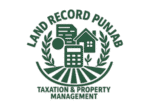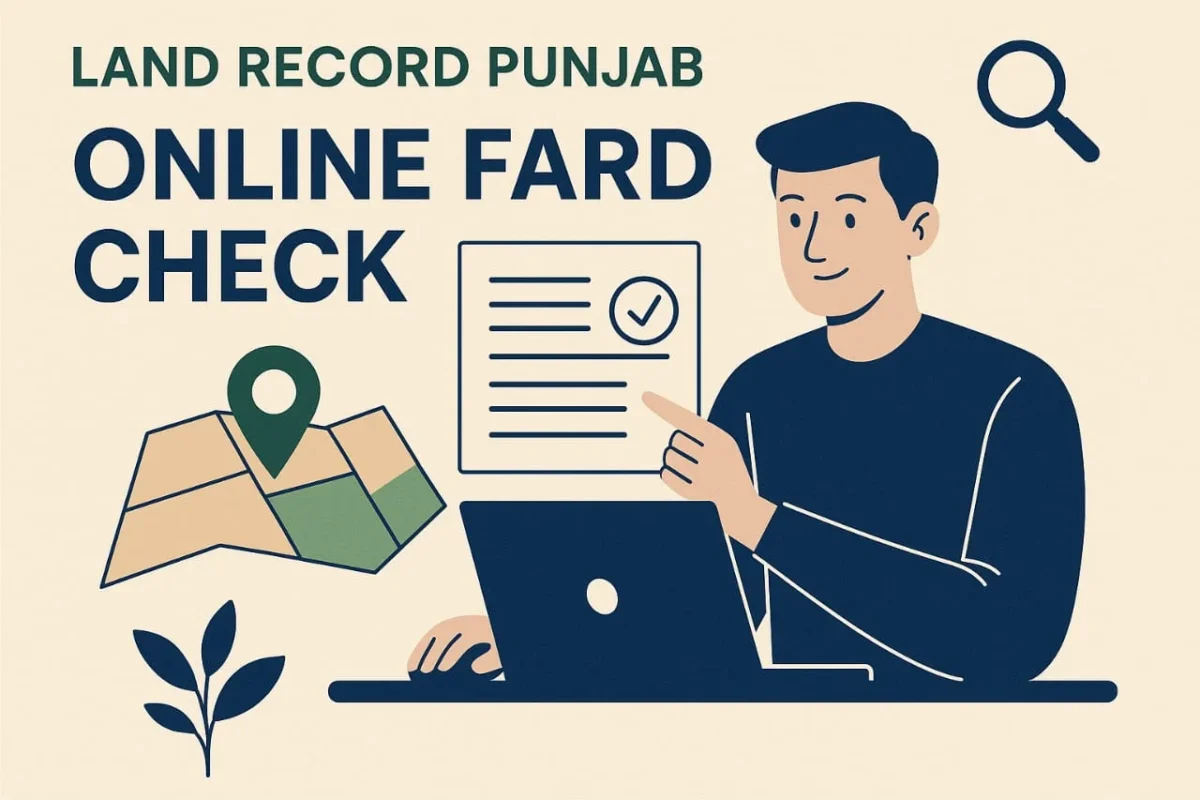Land records are crucial in verifying and protecting ownership of property. In Punjab, Pakistan, the Jamabandi system helps maintain accurate records of land ownership, the right to cultivate, and other related responsibilities. This helps in smooth functioning of property transactions, legal activities, and even the resolution of conflicts. This article discusses the Jamabandi Punjab Pakistan system, the significance of documenting land and how landowners can access their Jamabandi Punjab Pakistan online. Moreover, we will discuss the major concerns of property owners and how advanced technology is providing solutions to enhance transparency and streamline the processes.
Brief Overview of Land Records system in Pakistan
Land records are important in Pakistan for ownership verification, agricultural planning, and dispute resolution. These records have always existed in written format, with the local revenue department retaining them. With the digital shift initiated by the Punjab Land Record Authority (PLRA), land records are being jamabandi, along with other records, have been updated. The online and manual systems being introduced along with the digitization of records is resulting in proper management of land records and increasing accuracy, transparency, and efficiency.
What is Jamabandi in Land Records?
Jamabandi is the legal document known as the Record of Rights (RoR) for a defined piece of land. It contains important information such as the rights of the owners, the responsibilities for the land, and other vital information. In Punjab, local revenue departments are responsible for updating Jamabandi records every four years. These records are the authoritative proof of ownership, cultivation rights, and land usage.
Historical Roots of Jamabandi
Jamabandi is a colonial legacy. It originated when the British implemented a uniform land revenue system throughout the Indian subcontinent for easier tax collection and better control over land records. Even now, it is a vital mechanism for recording land ownership in Punjab, Pakistan.
The Role of Jamabandi in Ownership Documentation
Jamabandi is the key document for establishing land ownership. It is important in selling and buying land, inheritance claims, and other legal matters. It is one of the first documents checked when land is being bought or sold to confirm ownership and prevent fraud.
Importance of Jamabandi Fard
Jamabandi Fard as Proof of Ownership
Jamabandi Fard is the certified copy of the Jamabandi record and it serves as indisputable proof of land ownership. This document is vital for various transactions-related issues of buying and selling land and acquiring mortgages. In the case of loans or legal issues about the land, the Jamabandi Fard ensures smooth, transparent, and effortless dealings.
Legal Importance in Property Transactions
In transactions of properties, the Jamabandi Fard is of immense legal importance. It is needed for registration of properties, loan applications, and for resolving land disputes. This document is critical for transactions as it contains current and correct details of ownership. This document also helps in minimizing case of fraudulent transactions. Because it is certified, buyers and sellers can trust the ownership details and transact confidently.
Prevention of Fraud and Disputes
A key advantage of the Jamabandi Fard document is its role in preventing fraud. It exposes correct ownership details and ensures information transparency which reduces the chances of both fraud and conflict. Therefore, all parties can engage in the transaction confidently.
Components of a Jamabandi Record
The Jamabandi punjab pakistan record consists of several important components that provide a comprehensive overview of land ownership and use. These include:
Khewat Number: Identifies the ownership of a piece of land.
Khasra Number: It acts as a unique reference for each piece of land.
Khatauni Number: Details the cultivators or tenants of the land.
Owner Details: Names and personal information of the landowners.
Cultivator Details: Information about the individuals cultivating the land.
Type of Land: This classification defines its purpose and legal standing.
These elements collectively make the Jamabandi punjab pakistan record an essential document for verifying ownership, land use, and cultivation rights.
Jamabandi in Punjab, Pakistan
How Jamabandi is Maintained in Punjab
In Punjab, the Jamabandi system is managed and maintained by the Punjab Land Record Authority (PLRA). The PLRA is responsible for digitizing and updating land records, ensuring that they remain accurate and easily accessible to the public. The introduction of online systems has significantly improved the accessibility and efficiency of the Jamabandi Punjab Pakistan records, making the process more transparent.
Role of Punjab Land Record Authority (PLRA)
The PLRA plays a crucial role in the modernization of land records in Punjab. By transitioning to digital systems, the PLRA has drastically reduced corruption and delays in record maintenance, providing greater convenience and security for landowners. The PLRA’s online portal has made it possible for individuals to access their Jamabandi records without the need to visit revenue offices physically.

How to Check Online Jamabandi in Punjab Pakistan Zameen
Step-by-Step Guide to Accessing Online Jamabandi Records
Accessing Jamabandi Punjab Pakistan records online is a straightforward process. To view or download your Jamabandi record, simply follow these steps:
- Go to the Punjab Land Record Authority (PLRA) website.
- Head to the “Jamabandi” or “Land Records” section.
- Enter the necessary details, including your district, tehsil, and village.
- Provide the Khewat or Khasra number to retrieve the specific land record.
- View or download the Jamabandi record for your reference.
Benefits of Online Jamabandi
The online Jamabandi punjab pakistan system brings numerous benefits, including:
- It saves time by eliminating the necessity of visiting revenue offices in person.
- Offering real-time updates and enhanced transparency, minimizing the risk of outdated or manipulated records.
- Providing easy access to information, enabling landowners to manage and oversee their properties more efficiently.
Difference Between Fard and Jamabandi
Clarifying Confusion Between Terms
Although both Fard and Jamabandi are related to land records, they serve different purposes:
- Jamabandi is the comprehensive record of rights, detailing ownership, cultivation, and other relevant land information.
- Fard, on the other hand, is a certified extract from the Jamabandi and serves as a proof of ownership for legal and financial transactions.
When to Use Which Document
- Use Jamabandi for a complete view of land ownership and cultivation records.
- Use Fard when you need certified proof of ownership for legal or financial purposes such as property sales, inheritance, or loan applications.
Who Maintains the Jamabandi Records?
Role of Patwari and Tehsildar
Jamabandi records were the domain of Patwari and Tehsildar. These officials administered periodic updates and resolved local land disputes.
Role of Digital Systems (PLRA)
The impact of the PLRA is a remarkable improvement in the administration and management of land records. With the increase in technological digital systems, the PLRA has replaced a lot of the traditional manual work which has resulted in more effective and transparent management of land records. Such a shift reduces reliance on humans which increases accuracy and lowers avenues for corruption making the systems more trustworthy and easier to use for the land owners in Punjab.
Challenges & Common Issues in the Jamabandi System
Even with the benefits of digitization, there are still a lot of problems with the Jamabandi system in Punjab:
Delays in Updates: There is still a lot of work to be done with digitalizing the system because the manual work is slowing down updates to the records.
Errors in Names or Areas: Mistakes in landowner names, plot sizes, or land measurement details can result in disputes that impede the progress of property transactions.
Corruption and Outdated Records: In more rural regions, partial efforts towards the full digitization of land records, coupled with systemic corruption, remains a critical obstacle to achieving complete transparency.
Conclusion
The Jamabandi punjab pakistan system, acts as an important component of land records, as it helps in documenting the ownership of land and enables the transfer of land to be done legally. With the establishment of the Punjab Land Record Authority, PLRA, there have been many efforts towards the improvement of modern systems of land record management. These systems have been made available online for the landowners making the system more convenient and less complicated. Landowners can now confirm and defend their property rights with far more efficiency than previously. Everyone is encouraged to be updated about these systems so they do not fall prey to disputes and fraud while assisting in achieving seamless land record management.


